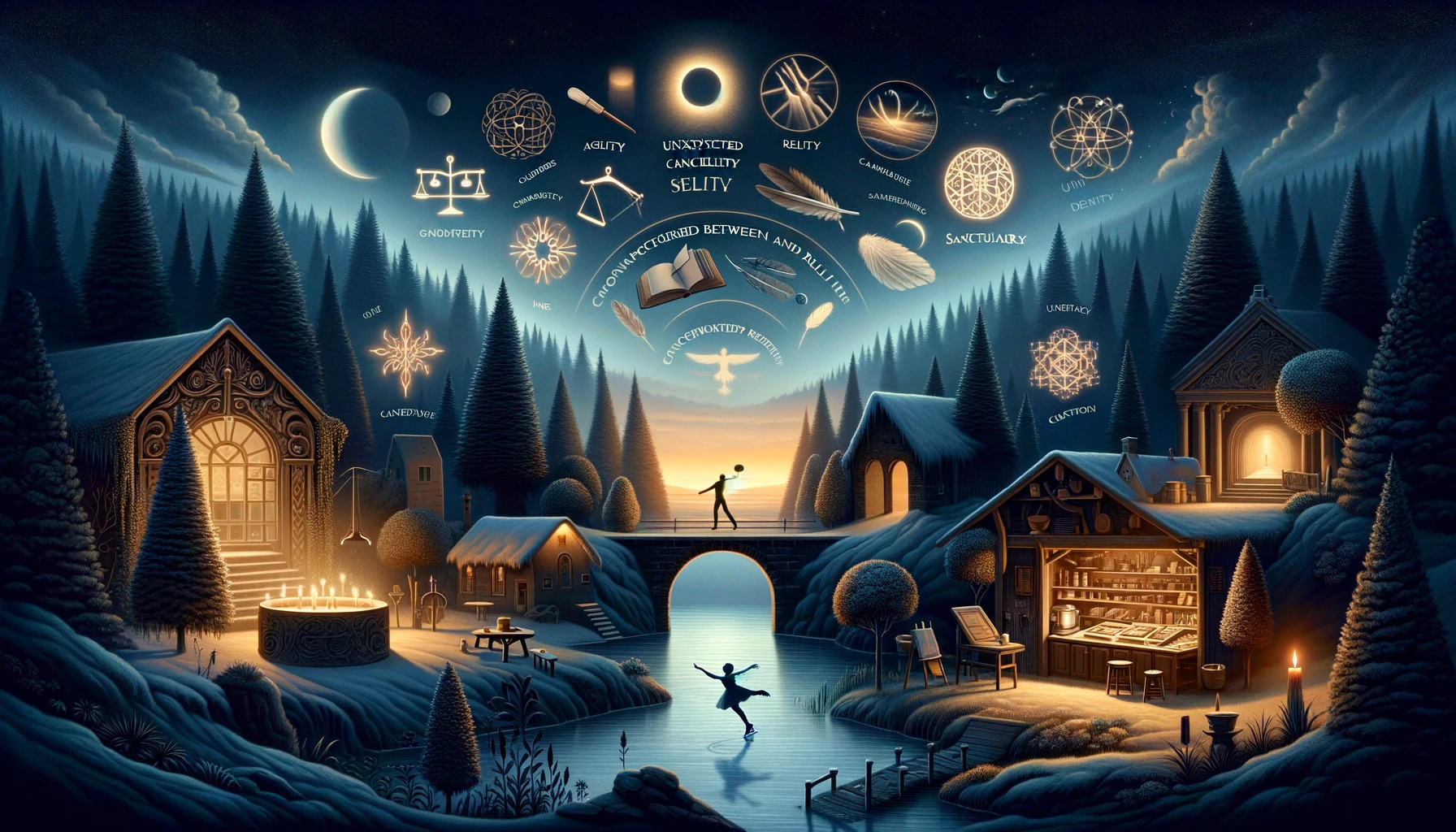In the vast landscape of the English language, there exists a fascinating subset of words that share a common characteristic: they are all composed of five letters and end with the letter “E”. These words, though seemingly simple, hold a unique charm and play a significant role in our daily communication. In this article, we will delve into the world of 5 letter words ending in E, exploring their origins, meanings, and usage.
Five letter words ending in E may appear to be a niche category, but they are surprisingly abundant in the English language. From common everyday terms to more obscure vocabulary, these words have found their way into various aspects of our lives. They can be nouns, verbs, adjectives, or even adverbs, each serving a specific purpose in conveying our thoughts and ideas.
| Summary of 5 Letter Words Ending in E |
|---|
| – Abundant in the English language |
| – Can be nouns, verbs, adjectives, or adverbs |
| – Serve specific purposes in communication |
| – Found in various aspects of our lives |
The Diversity of 5 Letter Words Ending in E:
One of the most striking features of 5 letter words ending in E is their diversity. They encompass a wide range of meanings and concepts, from emotions and actions to objects and attributes.
Some common examples include:
- Apple: A round fruit with red, green, or yellow skin and crisp, juicy flesh.
- Brave: Showing courage in the face of danger or difficulty.
- Cycle: A series of events or actions that are regularly repeated in the same order.
- Dance: To move rhythmically to music, typically following a set sequence of steps.
- Erase: To remove something, especially written or drawn marks, by rubbing or scraping.
These words demonstrate the versatility and richness of the English language, allowing us to express a wide range of ideas with just five letters.
| Summary of the Diversity of 5 Letter Words Ending in E |
|---|
| – Encompass a wide range of meanings and concepts |
| – Include emotions, actions, objects, and attributes |
| – Demonstrate the versatility and richness of English |
| – Allow expression of ideas with just five letters |
The Etymology of 5 Letter Words Ending in E:
Many 5 letter words ending in E have fascinating etymological origins. Some words have roots in Old English, while others have been borrowed from different languages over time.
For example:
- Aisle: Derived from the Old French word “ele,” meaning “wing” or “side.”
- Beige: Borrowed from the French word “beige,” which originally referred to the natural color of wool.
- Crepe: Originated from the Old French word “crespe,” meaning “curled” or “frizzed.”
- Drape: Evolved from the Old Norse word “drapa,” meaning “to cover or hang.”
- Elude: Derived from the Latin word “eludere,” meaning “to escape” or “to avoid.”
Understanding the origins of these words can provide insights into their meanings and how they have evolved over time.
| Summary of the Etymology of 5 Letter Words Ending in E |
|---|
| – Many words have roots in Old English or borrowed from other languages |
| – Examples include “aisle” from Old French, “beige” from French, “crepe” from Old French, “drape” from Old Norse, and “elude” from Latin |
| – Understanding origins provides insights into meanings and evolution |
The Role of 5 Letter Words Ending in E in Literature:
Five letter words ending in E have played a significant role in literature, appearing in countless poems, stories, and novels. Authors have used these words to create rhyme, rhythm, and imagery in their works.
Some notable examples include:
- In William Shakespeare’s play “Hamlet,” the famous line “To be, or not to be” showcases the use of the word “be” as a powerful existential question.
- Emily Dickinson’s poem “Hope is the thing with feathers” employs the word “hope” as a central theme, personifying it as a bird that perches in the soul.
- In Dr. Seuss’s beloved children’s book “Green Eggs and Ham,” the word “here” is repeated throughout the story, emphasizing the character’s persistence in trying new things.
These examples demonstrate how 5 letter words ending in E can be used effectively in literature to convey emotions, ideas, and themes.
| Summary of the Role of 5 Letter Words Ending in E in Literature |
|---|
| – Used in poems, stories, and novels to create rhyme, rhythm, and imagery |
| – Examples include “be” in Shakespeare’s “Hamlet,” “hope” in Emily Dickinson’s poem, and “here” in Dr. Seuss’s “Green Eggs and Ham” |
| – Effectively convey emotions, ideas, and themes in literature |
The Importance of 5 Letter Words Ending in E in Everyday Communication:
Beyond literature, 5 letter words ending in E are essential in our everyday communication. They help us express ourselves clearly and concisely, whether we’re speaking or writing.
Some common examples include:
- Agree: To have the same opinion or to consent to something.
- Blame: To assign responsibility for a fault or wrong.
- Cause: A person or thing that gives rise to an action, phenomenon, or condition.
- Dense: Having the component parts closely compacted together.
- Evoke: To bring or recall to the conscious mind.
These words are used in various contexts, from casual conversations to formal discussions, allowing us to articulate our thoughts and feelings effectively.
| Summary of the Importance of 5 Letter Words Ending in E in Everyday Communication |
|---|
| – Essential in expressing ourselves clearly and concisely |
| – Used in both speaking and writing |
| – Examples include “agree,” “blame,” “cause,” “dense,” and “evoke” |
| – Applicable in various contexts, from casual conversations to formal discussions |
Let’s take a look at some of the 5 Letter Words Ending With E that you can use:
5 Letter Words Ending With E and Their Meanings:
- Abode: A place where one resides or lives. An abode can be a house, apartment, or any other dwelling that provides shelter and comfort to its inhabitants.
- Agape: A term used to describe unconditional love, often in a spiritual or religious context. Agape is a selfless, pure form of love that is given without expecting anything in return.
- Baste: To moisten food, typically meat, with liquid or fat while cooking. Basting helps to keep the food moist, tender, and flavorful throughout the cooking process.
- Binge: To indulge in an activity, usually eating or watching television, excessively and in a short period. Binge behavior can be detrimental to one’s health and well-being.
- Cache: A hidden or secret storage place for valuable items or provisions. In computing, a cache is a small, fast memory area that stores frequently accessed data for quick retrieval.
- Chime: A melodic ringing sound produced by a bell or similar instrument. Wind chimes are popular decorative items that create soothing, ambient sounds when moved by a breeze.
- Douse: To drench or extinguish with water or another liquid. Firefighters often douse flames with water to control and suppress fires.
- Dulse: A type of edible seaweed that grows on the northern coasts of the Atlantic and Pacific oceans. Dulse has a rich, savory flavor and is often used as a seasoning or snack.
- Elude: To evade or escape from, often in a clever or cunning manner. Criminals may attempt to elude law enforcement by hiding or disguising themselves.
- Etude: A short, complex musical composition designed to help the performer master a specific technical skill. Etudes are commonly used by musicians to hone their abilities and techniques.
- Farce: A comedic theatrical work that features exaggerated, absurd situations and characters. Farces often rely on physical humor, mistaken identities, and slapstick comedy to entertain audiences.
- Fiche: A flat, transparent sheet of film containing microphotographs of printed material. Before the digital age, libraries often stored documents on microfiches to save space and preserve information.
- Gable: The triangular upper part of a wall between the sloping roofs of a building. Gables are common architectural features that add visual interest and character to a structure’s exterior.
- Glebe: A piece of land belonging to a church or ecclesiastical benefice. In the past, glebes were often used to support the livelihood of the clergy.
- Haste: Urgency or speed in acting or moving. Acting in haste can sometimes lead to poor decisions or careless mistakes.
- Heave: To lift or throw something heavy with great effort or force. The sailors heaved the anchor overboard to secure the ship’s position.
- Irate: Feeling or showing intense anger or irritation. The customer became irate when the store refused to refund his purchase.
- Istle: A fiber obtained from various species of agave plants, used for making brushes, baskets, and other products. Istle is known for its strength and durability.
- Jape: A trick, jest, or prank intended to mock or amuse. The court jester’s clever japes entertained the royal family and lightened the mood in the castle.
- Jive: A lively style of dance that originated in African-American communities in the 1930s and 1940s. Jive is characterized by its fast, syncopated rhythms and energetic movements.
- Knave: A dishonest or unscrupulous man; a rogue or scoundrel. In playing cards, the knave, or jack, is often depicted as a young male figure.
- Krone: The currency of Denmark, Norway, and Sweden. The value of the krone fluctuates based on economic conditions and foreign exchange rates.
- Lapse: A temporary slip or deviation from expected behavior or performance. The student’s lapse in judgment led to a regrettable decision.
- Lethe: In Greek mythology, a river in the underworld that caused forgetfulness in those who drank from it. The phrase “to drink from the waters of Lethe” means to erase memories or forget the past.
- Manse: A large, impressive house or mansion, often associated with a clergyman or other prominent figure. The wealthy family’s manse was a symbol of their status and influence in the community.
- Midge: A small, delicate flying insect resembling a mosquito. Swarms of midges can be a nuisance in damp, marshy areas during the summer months.
- Niche: A specialized segment of the market for a particular product or service. The company found success by focusing on a specific niche within the industry.
- Nonce: A single occasion or purpose; a one-time event. The term “for the nonce” means “for the present occasion” or “temporarily”.
- Ochre: A natural pigment ranging in color from yellow to orange or brown. Prehistoric cave paintings often featured ochre tones, derived from earth minerals.
- Ovule: The structure within the ovary of a plant that develops into a seed after fertilization. Each ovule contains an embryo sac, which houses the reproductive cells.
- Pique: A feeling of irritation or resentment triggered by a perceived slight or insult. The actor’s pique over not receiving the lead role led to tension on the set.
- Prise: To force something open or move it apart using leverage. The burglar used a crowbar to prise open the locked window.
- Quake: To shake or tremble, often as a result of fear, anxiety, or a seismic event. The ground began to quake as the powerful earthquake struck the city.
- Quire: A set of four sheets of paper or parchment folded to form eight leaves. In medieval times, books were often created by binding multiple quires together.
- Rouse: To awaken or stir from sleep or inactivity. The rooster’s crow roused the farmers from their slumber at the break of dawn.
- Rune: An ancient letter or symbol used in Germanic alphabets, often associated with mystery or magic. Norse mythology is filled with tales of powerful runes and their supernatural properties.
- Salve: An ointment or balm used to soothe or heal the skin. The herbalist created a natural salve to alleviate the symptoms of eczema.
- Singe: To burn or scorch slightly, often with a sudden, intense heat. The careless camper singed his eyebrows when he leaned too close to the crackling fire.
- Tinge: A slight trace or hint of color, flavor, or emotion. The artist added a tinge of blue to the painting to create a sense of melancholy.
- Trope: A recurring theme, motif, or cliché in literature, art, or media. The “chosen one” is a common trope in fantasy novels, where a seemingly ordinary character is destined for greatness.
- Umbra: A deep or complete shadow, especially the darkest part of a shadow cast by an opaque object. In astronomy, the umbra refers to the innermost region of a shadow during an eclipse.
- Upend: To turn something upside down or end over end. The mischievous child upended the toy box, scattering its contents across the floor.
- Verge: The edge or border of something, often marking a transition or boundary. The hikers stood on the verge of the cliff, marveling at the breathtaking view below.
- Vogue: The prevailing fashion or style at a particular time. The designer’s innovative creations set a new vogue in the industry, inspiring countless imitations.
- Wane: To gradually decrease in size, strength, or intensity. As the moon wanes, its visible surface diminishes until it reaches the new moon phase.
- Whelp: A young offspring of a dog or other carnivorous mammal. The wolf’s whelps huddled together in the den, relying on their mother for warmth and protection.
- Xenon: A colorless, odorless noble gas found in trace amounts in the Earth’s atmosphere. Xenon is often used in specialized lighting applications, such as strobe lights and photographic flashes.
- Xylem: The vascular tissue in plants that transports water and dissolved nutrients from the roots to the leaves. Xylem is composed of elongated cells that form hollow tubes throughout the plant.
- Yowl: A loud, prolonged cry or wail, typically associated with cats or other animals. The stray cat’s yowl echoed through the alleyway, signaling its distress.
- Zyme: An enzyme or fermenting agent, often used in biological or chemical processes. Zymes play a crucial role in catalyzing reactions and breaking down complex substances.
| Word | Summary |
|---|---|
| Abode | A place of residence or dwelling |
| Agape | Unconditional, selfless love |
| Baste | To moisten food while cooking |
| Binge | Excessive indulgence in an activity |
| Cache | A hidden storage place or fast memory area |
| Chime | A melodic ringing sound |
| Douse | To drench or extinguish with liquid |
| Dulse | An edible seaweed |
| Elude | To evade or escape from |
| Etude | A short, complex musical composition |
| Farce | A comedic theatrical work with absurd situations |
| Fiche | A flat, transparent sheet containing microphotographs |
| Gable | The triangular upper part of a wall between roofs |
| Glebe | Land belonging to a church |
| Haste | Urgency or speed in acting |
| Heave | To lift or throw something heavy |
| Irate | Intensely angry or irritated |
| Istle | A fiber from agave plants |
| Jape | A trick, jest, or prank |
| Jive | A lively style of dance |
| Knave | A dishonest or unscrupulous man |
| Krone | The currency of Denmark, Norway, and Sweden |
| Lapse | A temporary slip or deviation |
| Lethe | A mythical river causing forgetfulness |
| Manse | A large, impressive house |
| Midge | A small, delicate flying insect |
| Niche | A specialized market segment |
| Nonce | A single occasion or purpose |
| Ochre | A natural pigment ranging from yellow to brown |
| Ovule | The structure in a plant that develops into a seed |
| Pique | A feeling of irritation or resentment |
| Prise | To force something open using leverage |
| Quake | To shake or tremble |
| Quire | A set of four sheets of paper folded to form eight leaves |
| Rouse | To awaken or stir from sleep |
| Rune | An ancient letter or symbol associated with mystery |
| Salve | An ointment used to soothe or heal the skin |
| Singe | To burn or scorch slightly |
| Tinge | A slight trace or hint of color, flavor, or emotion |
| Trope | A recurring theme or cliché in literature or media |
| Umbra | A deep or complete shadow |
| Upend | To turn something upside down |
| Verge | The edge or border of something |
| Vogue | The prevailing fashion or style |
| Wane | To gradually decrease in size or intensity |
| Whelp | A young offspring of a carnivorous mammal |
| Xenon | A colorless, odorless noble gas |
| Xylem | The vascular tissue in plants that transports water |
| Yowl | A loud, prolonged cry or wail |
| Zyme | An enzyme or fermenting agent |
Advantages:
- Five letter words ending in E are easy to remember and spell due to their short length and consistent ending.
- These words often have simple and straightforward meanings, making them accessible to a wide range of audiences.
- They can be used in various parts of speech, such as nouns, verbs, adjectives, and adverbs, providing flexibility in sentence construction.
- Many 5 letter words ending in E have a pleasant sound and can contribute to the overall flow and rhythm of written or spoken language.
Disadvantages:
- Some 5 letter words ending in E may have multiple meanings, leading to potential confusion or ambiguity if not used in the proper context.
- The limited length of these words may not always allow for detailed or nuanced expressions, requiring the use of additional words or phrases.
- Overusing 5 letter words ending in E in writing or speech may result in a repetitive or simplistic style, lacking variety and complexity.
Tips to Consider:
- When using 5 letter words ending in E, ensure that the intended meaning is clear and appropriate for the context.
- Combine these words with other vocabulary to create a balanced and engaging writing or speaking style.
- Be aware of homophones (words that sound the same but have different meanings) and use them carefully to avoid confusion.
- Explore the etymological origins of 5 letter words ending in E to gain a deeper understanding of their meanings and historical significance.
Main Takeaways:
- Five letter words ending in E are a diverse and valuable subset of the English language, serving various functions in communication.
- These words have interesting etymological origins and have been used effectively in literature to convey emotions, ideas, and themes.
- While they offer advantages such as simplicity and versatility, it’s important to use them judiciously and in combination with other vocabulary to maintain a balanced and engaging style.
- Understanding the meanings, origins, and potential limitations of 5 letter words ending in E can enhance our ability to communicate effectively and appreciate the richness of the English language.
Final Thoughts:
Five letter words ending in E may seem like a small subset of the English language, but they play a significant role in our communication. From their diverse meanings and etymological origins to their use in literature and everyday life, these words demonstrate the power and flexibility of language. By understanding and appreciating the value of 5 letter words ending in E, we can enhance our vocabulary and improve our ability to express ourselves effectively.
As we continue to explore the intricacies of the English language, it’s essential to recognize the importance of even the smallest components, such as 5 letter words ending in E. By embracing their diversity and versatility, we can unlock new ways of thinking, writing, and communicating, enriching our lives and the lives of those around us.
Sources:
FAQs:
While the exact number may vary depending on the source and criteria used, it is estimated that there are several hundred 5 letter words ending in E in the English language.
No, the pronunciation of 5 letter words ending in E can vary depending on the preceding letters and the word’s origin. For example, “cache” and “sieve” have different pronunciations despite both being 5 letter words ending in E.
Yes, 5 letter words ending in E can be used in professional or academic writing when appropriate for the context and audience. However, it’s important to maintain a balance and use a variety of vocabulary to convey ideas effectively.
Some commonly misspelled 5 letter words ending in E include “niece” (often misspelled as “neice”) and “siege” (often misspelled as “seige”).
Yes, studying 5 letter words ending in E can contribute to a broader understanding of the English language and help improve overall vocabulary. By exploring the meanings, origins, and usage of these words, one can develop a more comprehensive knowledge of language and communication.

Sean W, a passionate linguist and blogger, is deeply fascinated by the power and stories of words. Through his blog, WordsLearner, he shares insightful explorations of language, delving into the meanings, usages, and histories of words. Sean’s work serves as a guide, leading readers through the rich world of language and revealing how words shape our understanding and culture. By joining Sean on this linguistic journey, readers can discover the depth and beauty of language, making each word a gateway to new knowledge and appreciation.





